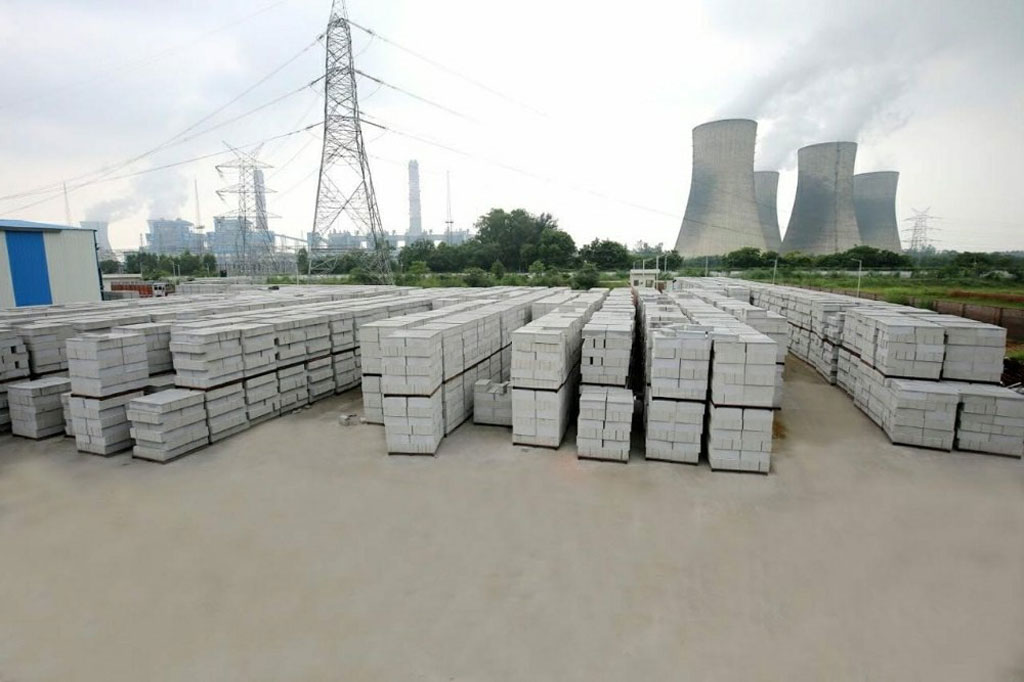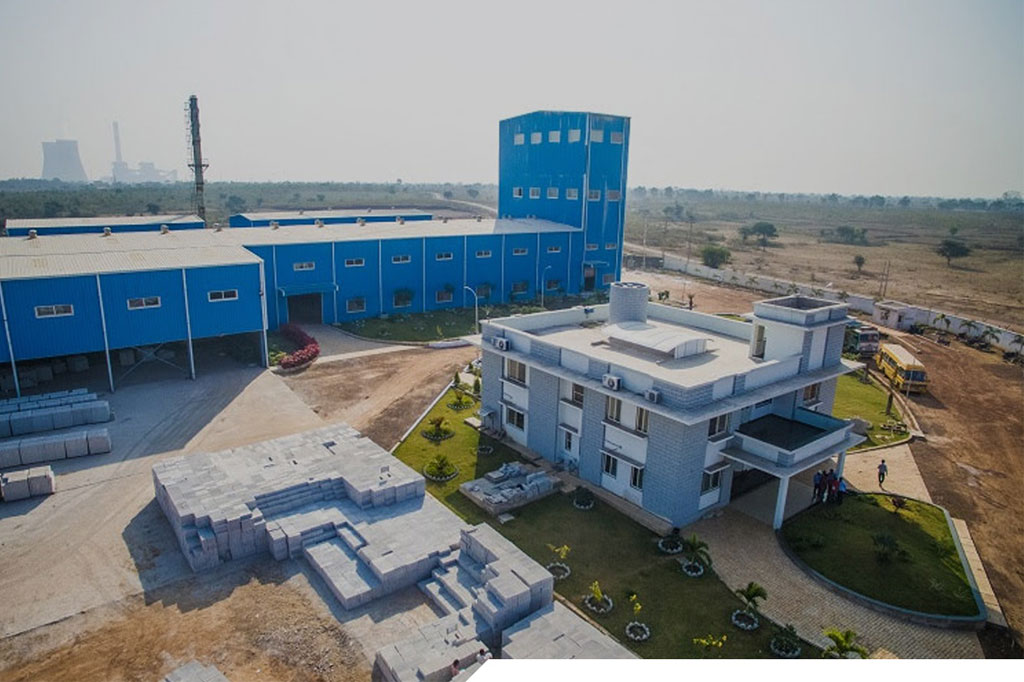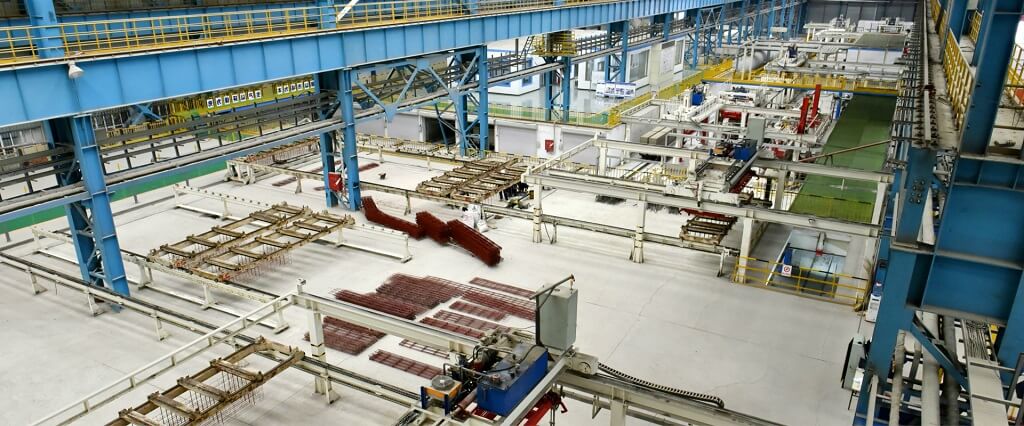AAC blocks are a type of lightweight, energy-efficient, and environmentally friendly building material that has gained popularity in the construction industry. Setting up an AAC (Autoclaved Aerated Concrete) block manufacturing plant in India can be a strategic decision with several potential benefits.
Benefits of Setting up AAC Block Plants
Here are some benefits why you could consider setting up an AAC block manufacturing plant in India:
- Growing Construction Industry: India has a rapidly growing construction industry due to urbanization, infrastructure development, and increased demand for housing. AAC blocks offer an attractive alternative to traditional construction materials like clay bricks due to their energy efficiency and ease of use.
- Energy Efficiency: AAC blocks have excellent thermal insulation properties, helping to reduce energy consumption for heating and cooling in buildings. As energy costs continue to rise, there’s a greater interest in using energy-efficient building materials.
- High-Quality Building Materials: As people become more conscious of the quality of construction and durability of buildings, there is a growing demand for innovative and high-quality building materials like AAC blocks.
- Regulatory Incentives: The Indian government has been promoting sustainable construction practices through various policies and incentives. Setting up a manufacturing plant that aligns with these initiatives could make you eligible for certain benefits or subsidies.
- Reduced Construction Time: AAC blocks are larger and lighter than traditional bricks, which can speed up construction. This can be particularly beneficial in meeting tight project deadlines.
- Low Environmental Impact: AAC block production involves minimal use of raw materials and emits lower levels of carbon dioxide compared to traditional brick manufacturing.
- Market Potential: As the awareness and acceptance of AAC blocks increase, there is significant market potential for manufacturers. India’s population, urbanization rate, and housing needs provide a substantial market base.
- Export Opportunities: If your AAC blocks meet international quality standards, there could be potential for exporting to neighboring countries and other regions where sustainable construction materials are in demand.

Factors You Need to Consider for Building AAC Block Plants
The initial investment to set up an AAC block plant can be significant, the long-term operational cost savings can be substantial. Setting up an AAC block manufacturing plant in India necessitates a meticulous consideration of diverse factors, each intricately intertwined with the project’s viability and success.
- Location and Land: Optimal site selection, taking into account proximity to essential raw materials, skilled workforce availability, and transportation networks, is crucial. Adhering to local zoning regulations and obtaining necessary permits is vital. Government initiatives like the “Make in India” campaign can offer incentives for industrial establishment.
- Plant Size and Capacity: The chosen production capacity defines the scale of machinery, infrastructure, and investments required. Align the plant’s size with regional market demands and future growth projections, considering policies encouraging infrastructure development and housing.
- Infrastructure and Utilities: Investing in reliable utilities such as water, power, and waste management systems is paramount. Government schemes like “Smart Cities Mission” underscore the significance of sustainable infrastructure, potentially facilitating support for utility setup.
- Machinery and Technology: The machinery required for manufacturing AAC blocks includes jaw crushers, ball mills, slurry agitators, autoclaves, cutting machines, and other specialized equipment. The quality and capacity of these machines will impact both the initial investment and long-term operational efficiency. Leveraging the “Atmanirbhar Bharat” initiative, which promotes indigenous manufacturing, can potentially reduce machinery acquisition costs.
- Raw Materials Sourcing: Securing a consistent supply of raw materials, including fly ash, cement, and lime, is essential. Availing benefits from the “Fly Ash Utilization Program” can aid in sustainable sourcing, reducing environmental impact and costs.
- Skilled Workforce: Recruiting skilled labor for production, quality control, and maintenance is pivotal. Aligning with skill development initiatives like “Skill India” can foster a capable workforce and potentially provide recruitment incentives.
- Regulatory Compliance: Adhering to local regulations and obtaining necessary licenses underscores the project’s legitimacy. Familiarity with environmental policies like “Environment Impact Assessment” norms is critical for responsible and compliant operations.
- Technology Adoption and Training: Incorporating advanced technology and offering training to employees ensures optimal equipment utilization. Government collaborations with technical institutions can potentially facilitate training partnerships.
- Environmental Responsibility: Given the eco-friendly nature of AAC blocks, leveraging incentives from schemes like “Green Building Certification” can promote sustainable practices and contribute to market differentiation.
- Market Penetration and Distribution: Devoting resources to marketing strategies and distribution networks enhances product reach. Associating with housing initiatives like “Pradhan Mantri Awas Yojana” can align with affordable housing targets and boost market presence.
- Working Capital Management: Adequate working capital safeguards against production interruptions. Financial support from institutions supporting small and medium enterprises can aid in maintaining a healthy cash flow.
- Expert Consultation: Engaging industry specialists, architects, and legal advisors to streamline regulatory adherence. Capitalizing on the “Invest India” platform can offer guidance and support.
- Financing and Subsidies: Accessing financial aid through initiatives like the “Credit Linked Capital Subsidy Scheme (CLCSS)” can alleviate the capital burden, contributing to a financially sustainable venture.
- Comprehensive Business Plan: A robust business plan, aligned with government schemes like “Startup India” can facilitate funding, support, and growth strategies.
Mini AAC Plant Total Investment
Our company can provide AAC block production lines with an annual output ranging from 50,000 cubic meters to 600,000 cubic meters. The 100,000 m³/year production line solution is an entry-level solution suitable for customers with low-cost investment in the early stage. Its production is estimated to be 800-1100 cubic meters per day for 8 hours, and the total investment in a mini AAC block plant (with a capacity of 100,000 m³/year) is about $400,000 – $1,000,000.
- Raw Material Preparation Equipment: Silos for storing sand, cement, lime, and aluminum powder, crushers, ball mills, and mixers for raw material processing. Approximate Investment: $50,000 – $100,000.
- Moulds and Mould Oil Application Equipment: Moulds for casting AAC blocks and panels. Mold oil application equipment. Approximate Investment: $10,000 – $30,000.
- AAC Production Equipment: Autoclave, mixing and pouring equipment, and cutting equipment. Approximate Investment: $500,000 – $1,500,000.
- Boiler System: Boiler for generating steam for the autoclave. Approximate Investment: $100,000 – $300,000.
- Control System: Automation and control system for the entire plant. Approximate Investment: $30,000 – $100,000
- Utilities and Infrastructure: Electrical systems, water supply, drainage, and compressed air system. Approximate Investment: Varies widely depending on location and existing infrastructure.
- Laboratory Equipment: Quality control and testing equipment.Approximate Investment: $10,000 – $30,000.
- Material Handling Equipment: Forklifts, conveyor belts, and cranes for material handling. Approximate Investment: $50,000 – $150,000.
- Packaging and Storage Equipment: Equipment for packaging and storing finished AAC products. Approximate Investment: $20,000 – $50,000.
- Safety and Environmental Equipment: Safety equipment, dust collectors, and emissions control systems. Approximate Investment: $50,000 – $100,000.
- Land and Building: Cost of acquiring land and constructing/building facilities. Approximate Investment: Highly variable based on location and design.
- Miscellaneous Costs: Permits, licenses, initial working capital, and contingency funds. Approximate Investment: Varies by location and regulatory requirements.
In Conclusion
It’s important to note that setting up an AAC block manufacturing plant requires careful planning, thorough market research, an understanding of local regulations, and a solid business strategy. It’s advisable to conduct a feasibility study to assess the demand, competition, regulatory requirements, and financial viability before proceeding with such an investment.



Thanks for sharing valuable information on AAC block plants! We’re in the same business.